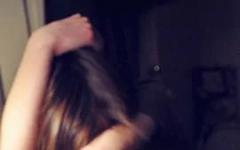Educational activity: Cognition. Security. Artistic creativity.
Age group: second younger group.
Purpose: formation of children's ideas about the sign road traffic"crosswalk".
Educational tasks:
To consolidate the children's idea of the words: passenger, pedestrian;
To acquaint children with the movement of vehicles and pedestrians;
Exercise in the ability to determine the right and left side;
Consolidate knowledge about traffic lights;
To acquaint children with the "pedestrian crossing" road sign;
Strengthen the skills of working with glue, contribute to the consolidation of knowledge about geometric shapes, the ability to distinguish colors.
Developmental tasks:
Develop coherent speech, attention, thinking, memory.
Educational tasks:
To foster a desire to master new knowledge and skills;
To educate children to respect their work and the work of others.
Integration educational areas:
Cognition, safety, artistic creation, socialization.
Vocabulary work:
passive dictionary: road sign, child restraint seat, passenger, pedestrian.
active dictionary: zebra, traffic light, driver.
Preliminary work: production of demonstration material, didactic games"Collect the traffic light", guessing riddles by traffic rules.
Equipment and materials:
demo: pictures on the subject of traffic rules, models of road signs, traffic lights.
dispensing: a sheet of black paper corresponding to the road, white stripes of paper - a pedestrian crossing.
Structure and methodological techniques:
1. Organizational moment (1-2 minutes): conversation, creating an emotional mood.
2. The main part (10 minutes): examination of pictures, question-answer, means of TCO, physical education, pedagogical assessment of the teacher, application, instructions, reminders.
3. The final part (2-3 minutes): analysis of the conducted GCD, encouragement.
GCD move:
1. Organizational moment.
Children sit on high chairs.
Educator: Guys, look at this picture.
We live with you in a big city. What city do we live in? (Children's answer).
There are many houses, shops, schools, kindergartens on every street of the city. Cars drive through the streets day and night. Buses transport people to work, school, hospital, etc. Those who ride the bus are called passengers, and when people walk, they are called pedestrians.
2.The main part.
Educator: Look at the screen, guys. Let's discuss these pictures.
When children are driving, where should they sit?
Children's answers.
Educator: Where should pedestrians walk?
Children's answers.
Educator: Pedestrians should walk on sidewalks and footpaths.
Where are we guys crossing the road?
Answers of children. (By zebra crossing, crosswalk)
Educator: Guys, how do we cross the road?
Children's answers. (He looks first to the left, then to the right, then only we cross the road to a green light or along a pedestrian crossing)
Educator: Where should children play?
Children's answers (On the playground).
Educator: And now, guys, we will play the game "Sparrows and a car". Imagine that we are now going to the street, to the playground. For this we need to cross the road. Where we cross the road.
We reach the pedestrian crossing. And they cross the road.
The game "Sparrows and the car"
Educator: We played with you. It's time for us to return. Let's go the same way.
We cross the road along the pedestrian crossing.
Educator: Let's make our own pedestrian crossings to help parents cross the road correctly. We sit down at the table. We have a black rectangle and stripes on the table white... We will glue white stripes on our road.
Children perform a pedestrian crossing application.
Educator: So we got a pedestrian crossing, you helped your parents cross the carriageway correctly. Thanks.
3. The final part.
Educator: Guys, you did a very good job today. I really liked it. When we went to play, where did we cross the road?
Children's answers.
Educator: What color of traffic light do we cross the road to?
Children's answers.
Educator: What did you like the most?
Children's answers.
Educator: You were attentive and friendly to each other today. Thank you very much.
Karkh Svetlana Alekseevna
Target:
Educational tasks:
To consolidate the knowledge of children about the work of traffic lights, about the rules for crossing streets;
Teach children to create an image of a traffic light by laying it out of plasticine on cardboard;
Developmental tasks:
Develop a sense of form and composition, continue to master the relief molding,
Develop coordination in the "eye-hand" system, synchronize the work of both hands.
Educational tasks:
Raise interest in learning new things and reflecting the knowledge gained in art,
To educate independence, accuracy when working with plasticine.
Equipment: Cheburashka toys and a truck, sculpting boards, stacks, napkins, plasticine, sheets of cardboard with a drawn outline of a traffic light.
Course of the lesson:
Educator: - Guys, listen to what this riddle is about:
To help you
The path is dangerous
We burn day and night -
Green, yellow, red.
Q: What does the poem say?
Children's answers: About traffic lights.
Q: Today we will take a closer look at the traffic light and figure out how its lights regulate traffic ...
Q: The red light is on. Guys, do you think you can cross the street now?
Children's answers: No.
Q: Look, the traffic light has changed again. What kind of light came on after the red one?
Children's answers: Yellow.
Q: That's right, yellow. It warns drivers and pedestrians to be careful ...
Q: What traffic signal is it allowed to go to?
Children's answers: On green.
Q: The green light is on. Now you can safely cross the road.
There is a knock at the door. The teacher opens the door, Cheburashka enters the group in a car.
H: Guys !! We have trouble in the fairyland! All traffic lights have disappeared, and now we cannot safely drive cars !! So many accidents! Only you can help us ...
Q: Well, can we help Cheburashka?
Children's answers: Yes !!
Q: How do you think we can help fairytale heroes?
Children's answers: find traffic lights, buy new ones, make them yourself ...
Q: Then we go to the aid of the fairytale heroes ...
Fizminutka
Cross the road
You are always on the streets
And they will prompt and help
Talking colors. (children march in place)
Red will tell you "No!"
Restrained and strict. (shake their head)
Yellow gives advice
Wait a little. (body tilts left-right)
And the green light is on -
Come in - says ... (marching)
The last quatrain is repeated twice and the second time the children one after another go to the tables and sit down.
Q: Here I have a sample of the traffic lights that are required for the Fairy Land. Look, from plasticine, what colors is it made?
Children's answers: Black, red, yellow, green.
Q: Right, but what shape must be given to the plasticine to make such a traffic light?
Children's answers: Sausages and tortillas.
Q: Yes, that's right, but how to make such multi-colored cakes?
Children's answers: Make balls and flatten them in the palms.
Q: Right. Black sausages will need to be rolled out between the palms to the desired thickness, cut in a stack to the desired length and glued to cardboard along the drawn contour. Tell me, the outline of what figure is drawn on the cardboard boxes?
Children's answers: Rectangle.
Q: Right, and in the middle of the plasticine rectangle we will place colorful cakes. Remind me in what order?
Children's answers: Above is red, in the middle is yellow, below is green.
Q: Everything is correct. Proceed, be careful and do not confuse anything, because the safety of the inhabitants of the Fabulous Land depends on you and me!
Children will complete the task. Finished works are displayed on the board.
Q: Cheburashka, are you satisfied with the children's work? Will there be enough traffic lights for your streets?
D: Yes, guys, thank you very much, these are just the kind of traffic lights that were needed for our intersections !! I arrived at your place in a magic car. Let's load all the traffic lights onto the car and my friend, the Good Wizard, will transfer them to the streets of the Fairy Land ...
Children put their work in the back of the car.
D: (to the children) Repeat after me:
One, two, three, turn around
Turn up the traffic light in the city !!
D: And I'll hurry, my friends are already tired of waiting for me. Goodbye!!
Children say goodbye to Cheburashka, and he leaves by car.
Synopsis of direct educational activities on artistic and aesthetic education in the senior group on the topic: "Red, yellow, green" with the use of personality-oriented, game, health-saving technologies.
Program tasks:Educational:
to consolidate the knowledge of children about traffic lights, about its signals;
to systematize the knowledge of children about road signs, about their meaning;
Developing:
develop observation, visual memory, the ability to respond with a complete answer;
attract children to the image of a traffic light made of plasticine, use pinching and rolling techniques;
Educational:
to form interest in working with plasticine;
develop fine motor skills, foster a desire to comply with traffic rules.
Preliminary work: examination of illustrations according to the rules of the road, D / i: "Cut pictures", "Road signs", "Everyone is supposed to know the rules of the road."
Equipment:
traffic light layout;
street posters;
plasticine, boards, napkins.
The course of direct educational activities:
Educator: Hello guys!Children: Hello!
Educator: Guys, today I want to invite you for a walk around our city. Imagine that we left the kindergarten on the street and walked. What are we called now?
Children: Pedestrians.
Educator: What is the name of the path for pedestrians?
Children: Sidewalk.
Educator: Well done, right. We live in a beautiful, green city with wide streets. Many cars and trucks, buses move along them and no one bothers anyone. This is because there are clear and strict rules for car drivers and we must strictly adhere to the established traffic rules. And our today's friend, who came to visit us, will help us to remember them as quickly as possible.
Traffic light Traffic light: Hello guys!
Children: Hello!
Traffic light Traffic light: I am polite and strict
I am known all over the world
I'm on the wide street
The most important commander!
Who am I guys?
Children: Traffic light.
Traffic light Traffic light: That's right guys. Please tell me, why am I needed?
Children: To regulate traffic.
Traffic light Traffic light: Look, I have three light signals: green, yellow and red. And who can help me tell you in what order they are located?
Children: At the top is red, in the middle is yellow, and at the very bottom is green.
Traffic light Traffic light: Right guys. Now I will tell you about signals.
Red: The strictest light.
Stop! There is no further road
The path is closed for everyone!
Tell me guys, what is the red light for?
Children: The red light reminds of danger, we stand at the red light and do not cross the road.
Traffic light Traffic light:
Yellow: So that you calmly cross,
Listen to our advice:
Wait! You will see yellow soon
There's a light in the middle!
Tell me guys, why do we need yellow light?
Children: Yellow light means ready, Driver sees yellow light from afar and slows down. And we must be attentive when we see the yellow light.
Traffic light Traffic light: Well done! Right! Here's what to say about green light.
Green: And behind it is a green light
Will flash ahead.
He will say - there are no obstacles,
Go boldly!
What does green light mean?
Children: At the green light, we can cross the road, but first carefully looking around.
Traffic light Traffic light: That's right guys! What good fellows you are, how much you know. And now I propose a little physical minute.
Movement training: "We are drivers"
Let's go, let's go by car (movement with hands),
Pressing the pedal (bend your leg at the knee, stretch it out).
Gas - turn on, turn off (turn the lever towards you, away from you),
We look intently into the distance (palm to forehead),
The wipers count the drops
Right, left - cleanliness (imitate wipers),
Hair ruffles the wind (ruffle your hair)
We are chauffeurs anywhere! ( thumb hands up).
Traffic light Traffic light: Did you guys like being real drivers?
Children: Yes!
Traffic light Traffic light: Guys, let's play with you an interesting game called "Traffic Light". Listen carefully to the rules of the game, stand in a circle, when I show you the red signal, you have to squat down, when I show you yellow, you get up, and when I show you green, you go. So, get ready! On your marks! Attention! We look carefully!
Traffic light Traffic light: Did you like our wonderful game?
Children: Yes!
Traffic light Traffic light: Thank you guys, it's time for us to say goodbye, but the trouble is, I'm so lonely standing alone on the roadway, could you help me with something?
Educator: Of course Dear Svetofor Svetoforich, thank you for such a necessary lesson, guys, let's - how can we blind our guest with assistants so that he is not so lonely? Do you agree?
Children: Yes!
Educator: Traffic light Traffic lights you sit quietly and see how we will mold your assistants. Guys in front of you is plasticine of different colors, please tell me from which flower we will sculpt the basis of our traffic light?
Children: Out of black.
Educator: Right guys! Then let's take some plasticine and warm it up in our hands. Roll it out between the palms of a column. Tell me what color is the very first traffic light?
Children: Red!
Educator: Rule! Now tell me what color are the second and third traffic lights?
Children: Yellow and green.
Educator: Well done! You listened very attentively and remembered everything well, then let's get down to it. First we take a little red plasticine and pinch off it small piece we roll a circle out of it and attach it to the base, we do the same with yellow and green plasticine.
The practical part.
Educator:(after completing the practical part). Guys, what a fine fellow you are and have tried very hard. We all got very beautiful traffic lights. Let's quickly show them to our Traffic Light Svetoforovich what wonderful and magnificent helpers you have turned out.
Educator: Now please listen to the poem by I. Gurina "Traffic Light":
The traffic light told us sternly
Caution, the road is here!
Don't play, don't be naughty,
Just stand and watch!
Upstairs the red lit up:
Red light is always dangerous!
A tractor and a tram are going.
Hey driver, don't yawn.
White zebra crossings;
Pedestrians are waiting quietly.
The traffic light told us clearly-
Red light is dangerous to go!
The traffic light winked at us
He blinked a yellow eye,
Yellow light and red light;
There is no road anyway!
The traffic light is on guard
He does not even sleep at night
Looking into his eyes
The brakes creaked
All the cars stood in a row
People are also waiting.
The traffic light lit up for us
Your kind green eye.
Carefully, slowly,
We don’t laugh, we don’t run!
After waiting quite a bit,
We're going across the road!
Reflection: Guys, did you enjoy our journey through the city streets? What have you learned new for yourself? What are the traffic light signals? What does each signal mean? Where and how should we cross the street? (children's answers).
Let's say goodbye to our guest, let him go to work and take our traffic light assistants with him.
All-Russian competition of pedagogical skills "Methodical piggy bank of a kindergarten teacher"
Municipal preschool educational institution " Kindergarten No. 18 "Teremok" of the combined type, the city of Novaya Ladoga.
Approximate summary of GCD "Transport for travel" (modeling - bas-relief)
PA "Artistic and Aesthetic Development"
A preparatory group for school with a compensatory focus for children with mental retardation.
Integration of educational areas: "Artistic and aesthetic development", " Cognitive development», « Speech development"," Social and communicative ".
Target: generalization of children's knowledge through the organization of various activities
Tasks:
Educational tasks: Clarify and consolidate children's knowledge about transport (ground, air, water, underground); professions of people who work in transport.
Visual tasks: Teach children to create an image of transport using the technique of bas-relief modeling; fix the techniques of "smearing from a piece of plasticine" with your fingertips, without going beyond the drawing line;
Developmental tasks:
- Develop an eye, imagination, visual and auditory perception.
- Develop fine motor skills of the hands during the sculpting process.
- Develop logical thinking
Educational tasks:
- To educate accuracy when doing work;
- To form the skills of cooperation, mutual understanding, benevolence, independence, initiative.
- Create a joyful emotional mood.
Preliminary work: monitoring the traffic on the street; guessing riddles; viewing illustrations with images of transport; role-playing game "Drivers", "Travel around the world"
Equipment and materials: Pictures on the theme "Transport", presentation "Modes of transport", audio recording "Sounds of transport", plasticine, boards, cards with silhouettes of transport.
GCD move
The audio recording "Sounds of transport" sounds. The teacher lays out pictures on the floor and tries to guess the transport by sound. Children come up.
Didactic game "Guess the type of transport by ear."
The teacher takes turns turning on the children to record the characteristic noises and signals produced different kinds transport - the creak of the brakes, the whistle of the train, the whistle of the steamer, the hum of the aircraft, the sound of the wheels of the carriage, the sound of a running car engine.
After listening to a fragment of the recording, children must determine which type of transport the characteristic noise corresponds to.
- Name it in one word. What is it?
- Guys, tell me, what is transport? (These are means that are used to transport people and goods).
- When people have good mood, then I want to go on a trip.
- Why do people travel? (To visit distant lands, visit your friends and relatives, learn something new). What can you travel on? (List).
- Guys, do you want to go on a trip? (Yes).
- But before going on a trip, you and I will need to choose a transport for the trip. And do you know transport well - now we will find out.
- What types of transport do you know? (Ground, water, air).
Didactic game "Rides, floats, flies".
And I have interesting tasks for you. But whether you will be able to cope with them - now we will see.
Presentation "Transport".
Physical education "Airplane":
Hands to the sides - in flight
We send the plane.
Right wing forward
Left wing forward.
Our plane flew.
It's time for us to choose the transport for the trip and prepare it for the trip. Here we have only a silhouette, we need to turn it into a beautiful, reliable and colorful form of transport.
Children choose a silhouette, take plasticine and boards.
Before we get started, let's stretch our fingers.
Finger gymnastics"Travel"
Me with the first finger baby
Let's go to the tram park on foot.
With the other - we will go on a tram,
Singing songs softly.
And with the third - we'll sit in a taxi,
We'll ask you to take us to the port!
With the fourth finger in the rocket
We will fly to another planet.
Get on the fifth plane,
Let's go flying with you!
Independent activities of children.
Recall the rules of the bas-relief technique (take a little plasticine and smear it with a thin layer, without going beyond the lines of the drawing). When the work is ready, each child says what he will travel on.
I will go on a trip by car (bus, motorcycle, etc.)
We consider the finished work and choose the place (city, country) where we want to travel (on the map, globe).
Target: Formation of the skills of sculpting a machine from rolled balls.
Tasks:
Continue teaching children, sculpting an object consisting of several parts of the same shape, but of different sizes.
Develop speech, attention.
Foster a sense of compassion for others.
Material: salty dough, soft toy Murzik the cat, napkins, napkins for modeling.
Course of the lesson
Organizing time.
Surprising moment.
A knock on the door. Guys, someone came to visit us, I'll go and take a look. The cat Murzik comes in.
Greets the guys! What a beautiful cat, fluffy, soft.
Murzik you are so scared, who scared you so? Guys, when I was walking towards you, I saw something like that on the street, they were buzzing, driving fast, fast, beeping (honking), I was so scared, what was it?
Educator: Children, what do you think scared our cat so much?
Children: cars
Murzik, you sit and listen, the children will tell you everything they know about cars.
There are toy cars on the table.
Educator: Children, what do you see on the table? These are cars, how many are there?
Children: A lot.
Educator: This is a passenger car, here it has wheels, windows, a steering wheel.
What kind of car is this?
Children: Great.
Educator: Do you know what this car is called?
This is a truck, it has a body, windows, steering wheel. The truck can carry,
different loads in your body. Ask one of the children to bring the cubes and unload them.
Can we transport the cubes in a small car?
(Answers of children)
Murzik you now know what cars are, what cars are.
Guys, when Murzik goes home, how can he cross the road? Cars drive there, don't they?
(children's answers)
Physical education minute
While the music is playing, you drive like cars, only the music stops playing, you stop.
Murzik, and now the guys will show you how you can make small cars out of salt dough at home.
II... Main part.
Acquaintance with the depicted object. Display of the typewriter.
Demonstration of the sequence of actions and sculpting techniques.
To mold a passenger car, you first need to roll one large ball, roll it between your palms in oval shape... Roll four small balls out of black dough - these will be wheels and attach from below. Then you can attach the headlights, made of polka dots and windows.
III... The result of the lessons.
Consideration of finished works. Murzik the cat, praises the children for the completed machines.








